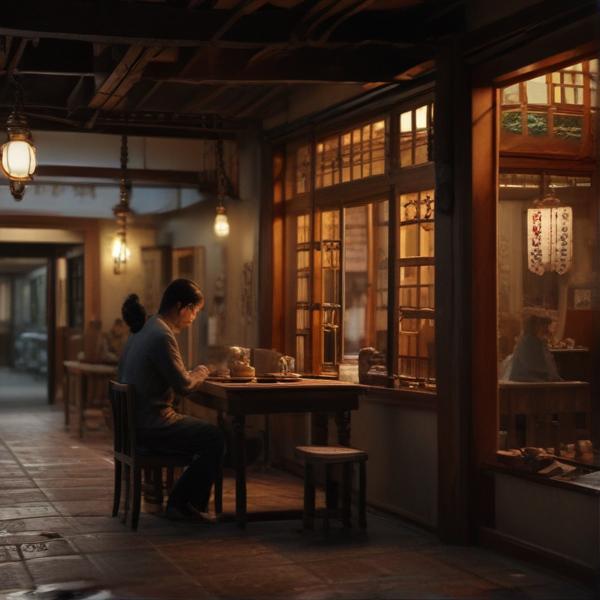基本信息 (Basic Information)
含义与用法 (Meanings & Usage)
中文核心释义 (Core Chinese Meaning): 看见;目睹;遇到
英文核心释义 (Core English Meaning): to see; to catch sight of; to meet
象形意义 / 为何这么写 (Pictographic Meaning / Writing Rationale)
文言文释义 (Classical Chinese Meaning)
与现代意义相近,表示“看见”“遇见”或“拜见”等。Similar to modern meaning, such as 'to see', 'to meet', or 'to visit (to pay respects)'.
深入学习 (In-depth Study)
字源故事 (Origin Story)
字形演变 (Character Evolution)
常用词语和例句 (Common Words & Examples)
看见 (to see; to catch sight of)
我刚才在公园里看见了他。
Eng: I just saw him in the park.
见面 (to meet (face to face))
我们明天一起见面吧。
Eng: Let's meet together tomorrow.
意见 (opinion; suggestion)
你对这件事有什么意见?
Eng: What is your opinion on this matter?
相关成语 (Related Idioms)
一见如故
Meaning: to feel like old friends at first meeting
多语言翻译 (核心释义) (Translations (Core Meaning))
- French: voir; apercevoir
- German: sehen; erblicken
- Spanish: ver; encontrarse con
- Italian: vedere; incontrare
- Portuguese: ver; encontrar
- Russian: видеть; встретить
- Arabic: يَرَى؛ يُقابِل
- Persian: دیدن؛ ملاقات کردن
- Dutch: zien; ontmoeten
- Polish: widzieć; spotkać
- Vietnamese: nhìn thấy; gặp
- Ukrainian: бачити; зустрічати
视频学习资源 (Video Learning Resources)
通过以下链接在热门视频网站搜索 "见" 的更多讲解:
Search for more explanations of "见" on popular video sites:
- 在 Bilibili.com 搜索 "见 字形演变 汉字起源" (Search on Bilibili)
- 在 YouTube.com 搜索 "见 Chinese character origin etymology" (Search on YouTube)
网络参考 (Web References for "见") ()
网络内容摘要 (Web Content Summary):
见(拼音:jiàn, xiàn)是汉语常用字,最初出现在商代甲骨文与金文中。其字形象眼睛与人,表示“看见、看到”的意思,是一个典型的象形字。本义为“看见、目睹”,并可引申为“遇见、接触、会见”等。 见 (pinyin: jiàn, xiàn) is a commonly used Chinese character, originally found in Shang dynasty oracle bone inscriptions and bronze inscriptions. The ancient form depicts an eye and a person, symbolizing “to see” or “to perceive.” Its core meaning is “to see/to witness,” with extended meanings such as “to meet, to encounter, or to have an opinion.”
- 象形与文化背景: “见”是象形字,本意为用眼睛去看,常被用来表示人与人之间的接触和沟通。 Pictographic & Cultural Background: “见” is a pictograph representing an eye above a person, emphasizing seeing and interpersonal connection.
-
常见用法:
- 作动词:如“看见”(to see)、“会见”(to meet)、“遇见”(to encounter)。
- 作助词,表示“被”,如“被见疑”(be doubted),这种用法多见于古文。
- 作名词,指“见解、看法”。
- As a verb: e.g., “看见” (kàn jiàn, to see), “会见” (huì jiàn, to meet), “遇见” (yù jiàn, to encounter).
- As a passive particle meaning “to be (acted upon),” as in classical texts: e.g., “被见疑” (to be doubted).
- As a noun: meaning “opinion” or “view.”
- 易混淆点: “见”作助词(表被动)多见于古文,现代汉语一般用“被”。 Common Confusion: The passive use of “见” is mostly found in Classical Chinese; in modern Chinese, “被” is typically used for this meaning.
汉字"见"的起源、演变过程-汉字字源辞典
见: 字源: 见. 信而见疑,忠而被谤(《史记》) 汉字身世小档案. "见,视也。""见"的本义就是看见、看到,进而引申为觐见。 "见"还有"被"的意思,因为看见的对象(人或物)必然会产生反向的作用力,因此而引申出"被"的意思,用作助词,表示 ...
见(汉语文字)_百度百科
见(拼音:jiàn、xiàn)是汉语一级通用规范汉字(常用字)。此字始见于商代甲骨文及商代金文,其古字形突出人体上方的眼睛,以强调看见,本义是看到、看见,特指平视。用作名词时表示看法,见解。由本义引申,"见"又有接触、遇到的意思,也有看得出,显得出的意思,还有会见、见面的 ...
更多图片 (见 More Images) ()
